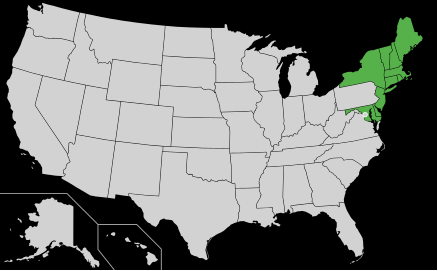New Fears Over Fracking Groundwater Contamination
January 8, 2013Drilling Spills Reaching Colorado Groundwater; State Mulls Test Rules
January 8, 2013By Jeff Tollefson, Nature, Jan. 2, 2013
Scientists are once again reporting alarmingly high methane emissions from an oil and gas field, underscoring questions about the environmental benefits of the boom in natural-gas production that is transforming the US energy system.
The researchers, who hold joint appointments with the National Oceanic and Atmospheric Administration (NOAA) and the University of Colorado in Boulder, first sparked concern in February 2012 with a study1 suggesting that up to 4% of the methane produced at a field near Denver was escaping into the atmosphere. If methane — a potent greenhouse gas — is leaking from fields across the country at similar rates, it could be offsetting much of the climate benefit of the ongoing shift from coal- to gas-fired plants for electricity generation.
Industry officials and some scientists contested the claim, but at an American Geophysical Union (AGU) meeting in San Francisco, California, last month, the research team reported new Colorado data that support the earlier work, as well as preliminary results from a field study in the Uinta Basin of Utah suggesting even higher rates of methane leakage — an eye-popping 9% of the total production. That figure is nearly double the cumulative loss rates estimated from industry data — which are already higher in Utah than in Colorado.
“We were expecting to see high methane levels, but I don’t think anybody really comprehended the true magnitude of what we would see,” says Colm Sweeney, who led the aerial component of the study as head of the aircraft programme at NOAA’s Earth System Research Laboratory in Boulder.
Whether the high leakage rates claimed in Colorado and Utah are typical across the US natural-gas industry remains unclear. The NOAA data represent a “small snapshot” of a much larger picture that the broader scientific community is now assembling, says Steven Hamburg, chief scientist at the Environmental Defense Fund (EDF) in Boston, Massachusetts.
The NOAA researchers collected their data in February as part of a broader analysis of air pollution in the Uinta Basin, using ground-based equipment and an aircraft to make detailed measurements of various pollutants, including methane concentrations. The researchers used atmospheric modelling to calculate the level of methane emissions required to reach those concentrations, and then compared that with industry data on gas production to obtain the percentage escaping into the atmosphere through venting and leaks.
The results build on those of the earlier Colorado study1in the Denver–Julesburg Basin, led by NOAA scientist Gabrielle Pétron (see Nature 482, 139–140; 2012). That study relied on pollution measurements taken in 2008 on the ground and from a nearby tower, and estimated a leakage rate that was about twice as high as official figures suggested. But the team’s methodology for calculating leakage — based on chemical analysis of the pollutants — remains in dispute. Michael Levi, an energy analyst at the Council on Foreign Relations in New York, published a peer-reviewed comment2 questioning the findings and presenting an alternative interpretation of the data that would align overall leakage rates with previous estimates.
Pétron and her colleagues have a defence of the Colorado study in press3, and at the AGU meeting she discussed a new study of the Denver–Julesburg Basin conducted with scientists at Picarro, a gas-analyser manufacturer based in Santa Clara, California. That study relies on carbon isotopes to differentiate between industrial emissions and methane from cows and feedlots, and the preliminary results line up with their earlier findings.
A great deal rides on getting the number right. A study4 published in April by scientists at the EDF and Princeton University in New Jersey suggests that shifting to natural gas from coal-fired generators has immediate climatic benefits as long as the cumulative leakage rate from natural-gas production is below 3.2%; the benefits accumulate over time and are even larger if the gas plants replace older coal plants. By comparison, the authors note that the latest estimates from the US Environmental Protection Agency (EPA) suggest that 2.4% of total natural-gas production was lost to leakage in 2009.
To see if that number holds up, the NOAA scientists are also taking part in a comprehensive assessment of US natural-gas emissions, conducted by the University of Texas at Austin and the EDF, with various industry partners. The initiative will analyse emissions from the production, gathering, processing, long-distance transmission and local distribution of natural gas, and will gather data on the use of natural gas in the transportation sector. In addition to scouring through industry data, the scientists are collecting field measurements at facilities across the country. The researchers expect to submit the first of these studies for publication by February, and say that the others will be complete within a year.
In April, the EPA issued standards intended to reduce air pollution from hydraulic-fracturing operations — now standard within the oil and gas industry — and advocates say that more can be done, at the state and national levels, to reduce methane emissions. “There are clearly opportunities to reduce leakage,” says Hamburg.



